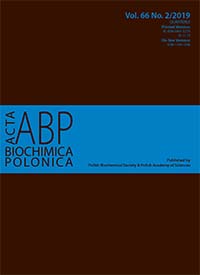When size matters – coordination of growth and cell cycle in bacteria - Review
Abstract
Bacterial cells often inhabit environments where conditions can change rapidly. Therefore, a lot of bacterial species developed control strategies allowing them to grow and divide very fast during feast and slow down both parameters during famine. Under rich nutritional conditions, fast-growing bacteria can divide with time interval equal to half of the period required to synthesize their chromosomes. This is possible due to multifork replication which allows ancestor cells to start copying genetic material for their descendants. This reproduction scheme was most likely selected for, since it enables maximization of growth rate and hence – effective competition for resources, while ensuring that DNA replication will not become limiting for cell division. Even with this complexity of cell cycle, isogenic bacterial cells grown under defined conditions display remarkably narrow distribution of sizes. This may suggest that mechanisms exists to control cell size at division step. Alternative view, with great support in experimental data is that the only step coordinated with cell growth is the initiation of DNA replication. Despite decades of research we are still not sure what the driving forces in bacterial cell cycle are. In this work we review recent advances in understanding coordination of growth with DNA replication coming from single cell studies and systems biology approaches.
Acta Biochimica Polonica is an OpenAccess quarterly and publishes four issues a year. All contents are distributed under the Creative Commons Attribution-ShareAlike 4.0 International (CC BY 4.0) license. Everybody may use the content following terms: Attribution — You must give appropriate credit, provide a link to the license, and indicate if changes were made. You may do so in any reasonable manner, but not in any way that suggests the licensor endorses you or your use.
Copyright for all published papers © stays with the authors.
Copyright for the journal: © Polish Biochemical Society.


